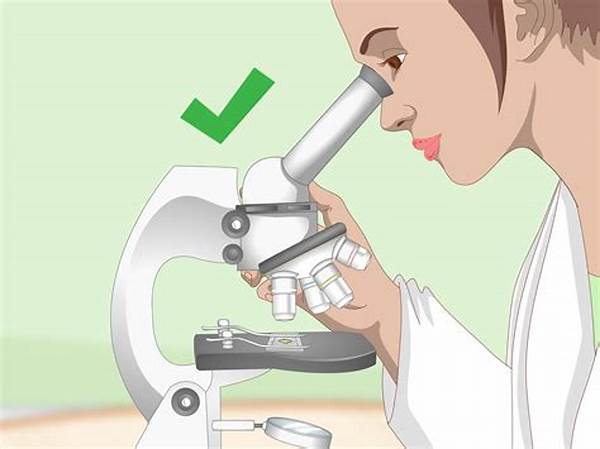Imagine unlocking a world invisible to the naked eye. A place where cells and microbes dance in an intricate ballet, revealing secrets that have shaped our understanding of life itself. Intrigued? You’re not alone. Millions have been captivated by this microscopic universe, and with a light microscope, you have the key to explore it firsthand. Whether you’re a student, a hobbyist, or a budding scientist, learning how to use a light microscope isn’t just an educational journey; it’s an adventure.
Read More : Examples Of Futures Contract Derivative Instruments
In today’s fast-paced, technologically-driven world, where digital screens and virtual reality dominate, something as tactile and hands-on as using a light microscope offers a refreshing return to basics. Yet, it’s anything but basic. Each twist and turn of the knobs brings excitement, like turning the lens to focus on thrilling microscopic creatures—an alien world waiting to be discovered. Now, let’s dive into how you can master this tool of marvel and unlock the hidden world around you.
Introduction to Using a Light Microscope
Using a light microscope can at first seem like a daunting task with its maze of lenses and adjustments, but fear not! This journey begins with a simple understanding of the basic components. So, whether it’s your first time or a quick refresher you need, let’s make this experience illuminating and fun.
To start, a light microscope consists of several integral parts including the eyepiece, objective lenses, stage, and light source. Each part works in harmony to magnify and reveal the intricate details of your specimens. As our story unfolds, we’ll uncover how these components come together to create magic.
The Right Setup
Before you plunge into the microscopic world, preparation is crucial. Setting up your microscope correctly is akin to tuning a musical instrument—every detail counts. Position your microscope on a stable, well-lit table to avoid any disturbance during your adventure. Adjust the arm and base for stability and comfort, ensuring the light source is primed to light up your revelations.
Focusing Your Vision
Now that your microscope is set up, it’s time to sharpen your vision—literally. Start with the lowest power objective lens, as this will give you a broad overview of your sample. Place the slide on the stage, secure it with stage clips, and use the coarse adjustment knob to bring your subject into view. Switch to the fine adjustment knob to reveal the fine details, adjusting the diaphragm to control the light intensity, as it paints a clearer picture.
Mastery of the Microscope Mechanics
Once you’ve got the basic functions down, it’s time to become a maestro at maneuvering the microscope. Understanding the subtleties of shifting focus and navigating through the layers of your specimen requires finesse. How do you achieve that? Let’s sharpen your skills.
Dive Deeper with Higher Magnifications
Feeling confident with low magnifications? Time to dive deeper. Gently rotate the nosepiece to switch to a higher power objective lens. The key is patience and precision; small adjustments go a long way. Observe not only what you see but also how the light interacts with your specimen. Think of it like watching a thrilling movie—every frame unveils more of the story.
Care and Maintenance
To keep this journey going, caring for your light microscope is essential. Dust is a foe, not a friend—keep those lenses clean using appropriate cleaning materials. Consider it akin to caring for a prized possession; after all, it’s your window into another world.
In-Depth Exploration Techniques
Now that you’re familiar with the basics, let’s explore advanced techniques to maximize your microscopic adventures.
Read More : Chinese Traditional Music Instrument Popular In Silk Road Performances
Discussing Specimen Preparation
Your specimen’s preparation is paramount for successful observation. Whether it’s a plant cell or a curious critter, using the right mounting techniques and stain can make a world of difference. Ensuring your slide is prepared with precision ensures your story unfolds without a hitch.
Tips for Enthusiastic Explorers
For those looking to explore further, consider using techniques such as phase contrast or differential interference contrast. These methods can bring details to life you might not see otherwise, adding another dimension to your mastery of using a light microscope.
Using Your Microscope: Practical Steps
Below is a detailed guide on the steps needed to effectively use a light microscope:
Conclusion: Unveiling New Perspectives
Using a light microscope transcends simple observation—it’s about unveiling new perspectives, stories, and intricacies of the world around us. Whether it’s for a scientific endeavor, educational pursuit, or sheer curiosity, mastering how to use this tool is invaluable. It connects us to the intricacies of life, bridging the gap between what is seen and unseen.
Celebrating the Microscopic World
Celebrate the microscopic world and the incredible details it reveals. Through practice and patience, become not just an observer but an explorer, revealing the enchanting and complicated ballet of cells and microorganisms. Share this knowledge with others—ignite their curiosity and understanding of the microcosm around us.
Continued Exploration
Remember, this is just the beginning of your microscopic journey. Continue to experiment, immerse yourself in new techniques, and stretch the boundaries of your discoveries. Each time you look through that eyepiece, remember you are witnessing a world few get to see—embrace it and let your newfound skills guide you to endless discoveries.
Let this adventure encourage not just you but others to delve into the enchanting world unlocked by a light microscope. Perfect the art of observation and share the discovery with those around you—because the more we look, the more we uncover. Keep your curiosity blazing, and who knows what you’ll discover next under that lens?
